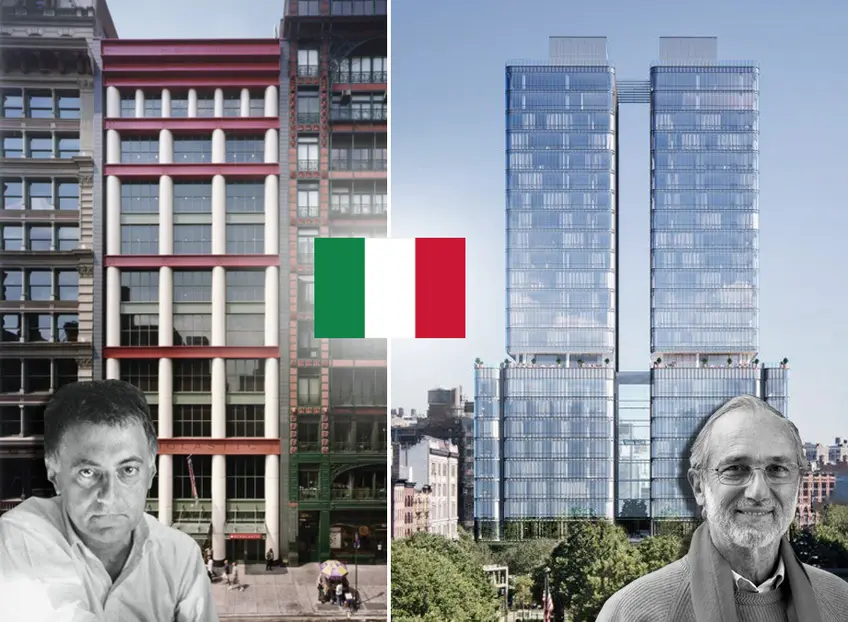 When walking through New York, the work of Italian designers goes beyond high-end boutiques (The Scholastic Building via Wiki Commons; 565 Broome Street via Douglas Elliman)
When walking through New York, the work of Italian designers goes beyond high-end boutiques (The Scholastic Building via Wiki Commons; 565 Broome Street via Douglas Elliman)
October is Italian Heritage Month. First celebrated in 1989, October was chosen to coincide with Columbus Day, the American national holiday traditionally celebrated on October 12, now celebrated on the second Monday in October. Nations usually proclaim Heritage Months to celebrate centuries of contributions by a group to a country.
Amid growing controversy surrounding Christopher Columbus's legacy, President Biden was the first president to formally recognize the second Monday of October as Indigenous Peoples’ Day. A number of states have chosen to recognize the day instead of Columbus Day, and at least one city has made Election Day a paid holiday by swapping out Columbus Day.
At the same time, other activists note that Columbus Day originated in response to anti-Italian sentiment and continues to honor the day as a celebration of Italian heritage. Indeed, President Biden issued a separate proclamation marking the achievements and contributions of Italian-Americans.
New York City seems to be having it both ways: The 79th Annual Columbus Day Parade is on again in New York this year. Touted as the world's largest celebration of Italian-American heritage, organizers expect 35,000 people from more than 100 groups to march up Fifth Avenue, from 47th Street to 72nd Street, and at least 1 million more spectators to be watching from the sidelines.
NYC public schools and government offices are closed today in honor of both Indigenous Peoples’ Day and Italian Heritage Day. Since Columbus Day is a federal holiday, government agencies like the DMV, libraries, and courts are closed.
Amid growing controversy surrounding Christopher Columbus's legacy, President Biden was the first president to formally recognize the second Monday of October as Indigenous Peoples’ Day. A number of states have chosen to recognize the day instead of Columbus Day, and at least one city has made Election Day a paid holiday by swapping out Columbus Day.
At the same time, other activists note that Columbus Day originated in response to anti-Italian sentiment and continues to honor the day as a celebration of Italian heritage. Indeed, President Biden issued a separate proclamation marking the achievements and contributions of Italian-Americans.
New York City seems to be having it both ways: The 79th Annual Columbus Day Parade is on again in New York this year. Touted as the world's largest celebration of Italian-American heritage, organizers expect 35,000 people from more than 100 groups to march up Fifth Avenue, from 47th Street to 72nd Street, and at least 1 million more spectators to be watching from the sidelines.
NYC public schools and government offices are closed today in honor of both Indigenous Peoples’ Day and Italian Heritage Day. Since Columbus Day is a federal holiday, government agencies like the DMV, libraries, and courts are closed.
In this article:
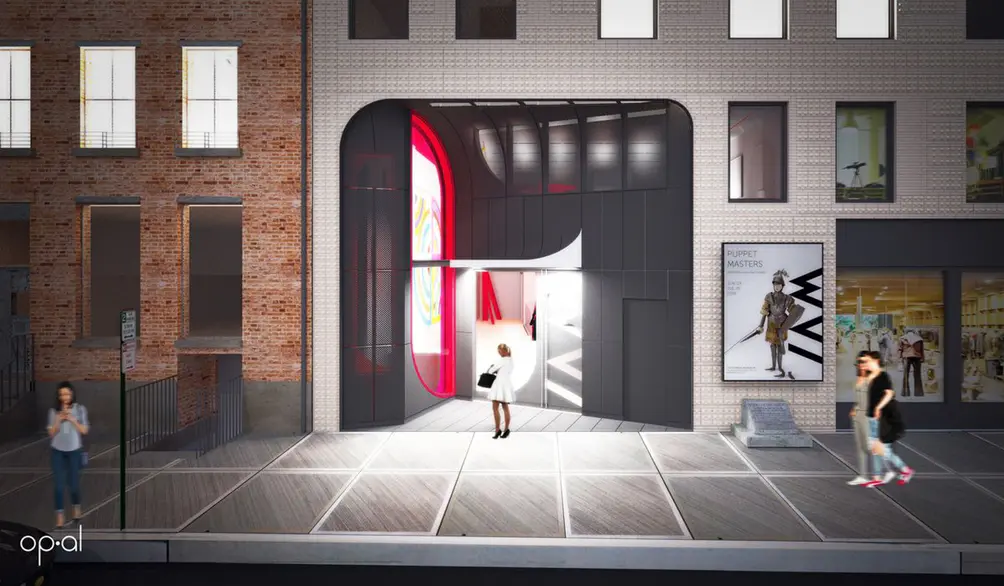 A greatly expanded Italian American Museum, at the base of the Morris Adjmi-designed Grand Mulberry, will open in Little Italy next year (Rendering via Nexus Building Development Group and op.AL)
A greatly expanded Italian American Museum, at the base of the Morris Adjmi-designed Grand Mulberry, will open in Little Italy next year (Rendering via Nexus Building Development Group and op.AL)
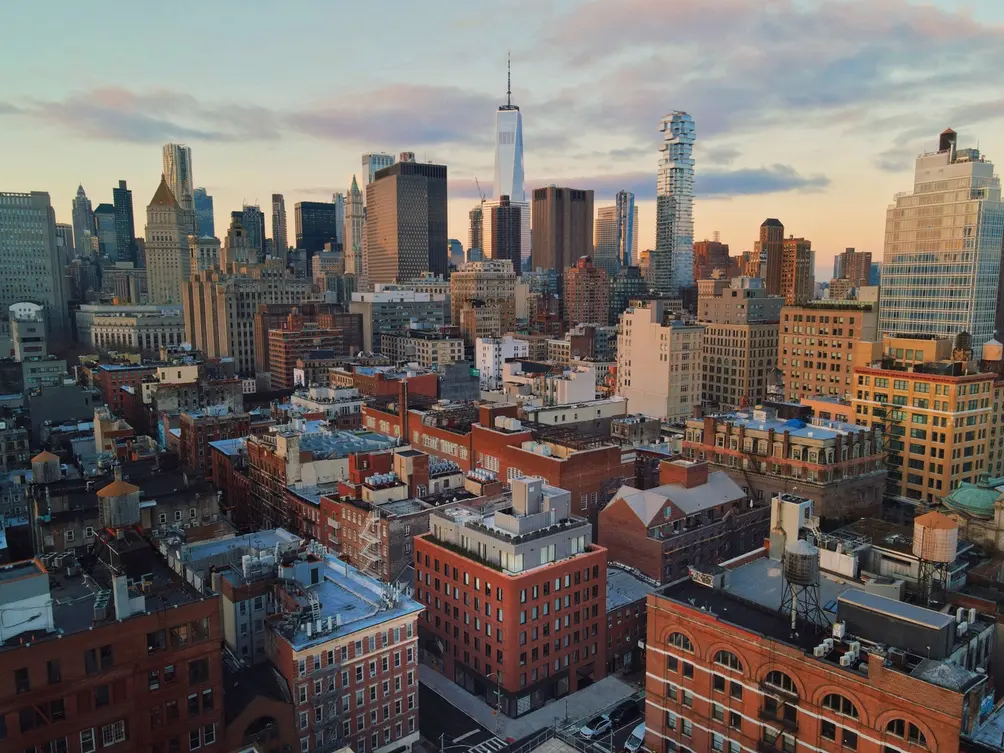 The museum will open at the base of The Grand Mulberry designed by Morris Adjmi Architects
The museum will open at the base of The Grand Mulberry designed by Morris Adjmi Architects
The influence of Italians on Amercian culture is profound and new impacts are still permeating New York City today. In Spring 2024, The Italian-American Museum is set to open its new Little Italy location at the base of a recently finished condo development called The Grand Mulberry. The deal puts the museum in a larger space rent-free in perpetuity.
The iconic Battery Maritime Building has been spiffed up and partially redeveloped into Casa Cipriani. And of course, Eataly remains a must-visit draw for locals and tourists alike, and Tribeca Citizen broke the news last month that the emporium is set to open at the base of 200 Lafayette Street in Soho later this year.
Additionally, many of the classical building styles favored throughout New York are derived from ancient Rome, and the intricate craftsmanship on some of the more ornate prewar buildings can be credited to Italian artisans. The Metropolitan Life Building was directly inspired by St. Mark’s Campanile in Venice, and countless buildings and clubs have been inspired by Italian palazzi. This is not confined to the past; Italian-born architects are still behind some of the city’s most noteworthy new architectural additions today. Below, see a list of some of the latest NYC projects by Italian architects.
Additionally, many of the classical building styles favored throughout New York are derived from ancient Rome, and the intricate craftsmanship on some of the more ornate prewar buildings can be credited to Italian artisans. The Metropolitan Life Building was directly inspired by St. Mark’s Campanile in Venice, and countless buildings and clubs have been inspired by Italian palazzi. This is not confined to the past; Italian-born architects are still behind some of the city’s most noteworthy new architectural additions today. Below, see a list of some of the latest NYC projects by Italian architects.
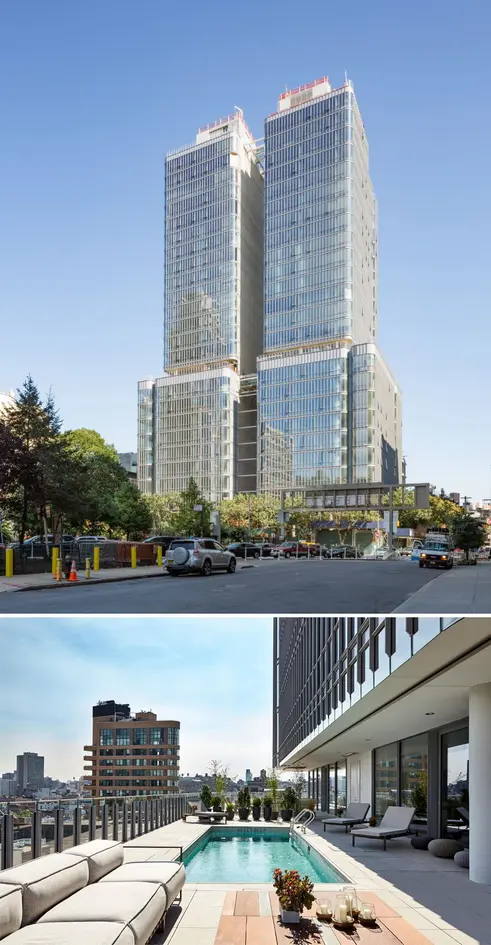 565 Broome Soho via Andrew Campbell Nelson
565 Broome Soho via Andrew Campbell Nelson
565 Broome Soho, 565 Broome Street
Neighborhood: Soho
Architect: Renzo Piano Building Workshop
6 two- through four-bedroom availabilities from $5.6M - $20.95M
The past few years have seen Hudson Square transform from an industrial to a residential neighborhood with 565 Broome Soho leading the charge. As Pritzker Prize laureate Renzo Piano Building Workshop’s first residential building in New York, the two-towered design’s glass facade gracefully curves at the corners is said to take on the color of the weather, and allows for spectacular skyline and river views.
All units boast high ceilings, gracious layouts, chef's kitchens, luxe baths, and generous closet space. A double-height attended lobby welcomes residents, and additional amenities include automated parking for purchase, a fitness center with yoga studio, lap pool with a steam room and sauna, children’s playroom, and lounge with green wall and library. It has already attracted the likes of tennis star Novak Djokovic and Uber founder Travis Kalanick.
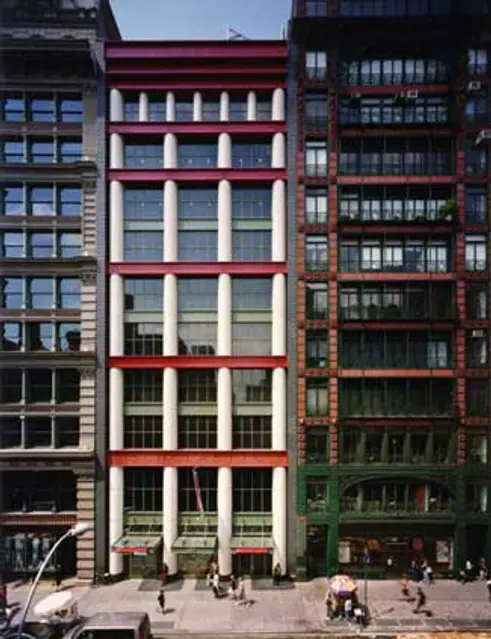 The Scholastic Building via Gensler
The Scholastic Building via Gensler
The Scholastic Building, 565 Broadway
Neighborhood: Soho
Architect: Aldo Rossi
To look at the Scholastic Building from the bustling street, it would appear that it has always been in the Soho Cast-Iron Historic District. However, the site went from a one-story garage to a ten-story steel, terra cotta, and stone structure designed by Pritzker Prize laureate Aldo Rossi, who has been described as “a poet who happens to be an architect.” It may have been Mr. Rossi’s first and only New York building, but Landmarks approved the design within an hour of completion. Following his untimely death in 1997, protege Morris Adjmi oversaw the building's design through to opening day.
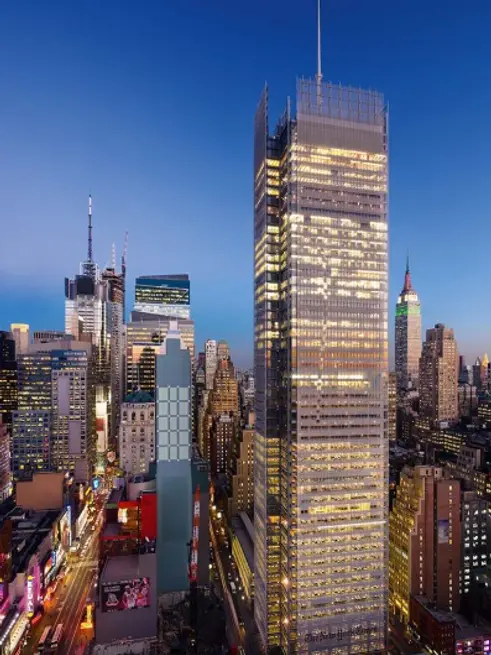 Credit: David Sunberg of Esto
Credit: David Sunberg of Esto
The New York Times Building, 620 Eighth Avenue
Neighborhood: Midtown West
Architect: Renzo Piano Building Workshop
Times Square may have been named after its most famous tenant, but it didn’t take long for The New York Times to outgrow its original space at One Times Square. Nearly a century later, its new headquarters breathed new life into a derelict stretch of Midtown across from the Port Authority Bus Terminal. The design by Renzo Piano Building Workshop incorporates several environmentally friendly features for increased energy efficiency.
Would you like to tour any of these properties?
Just complete the info below.
Or call us at (212) 755-5544
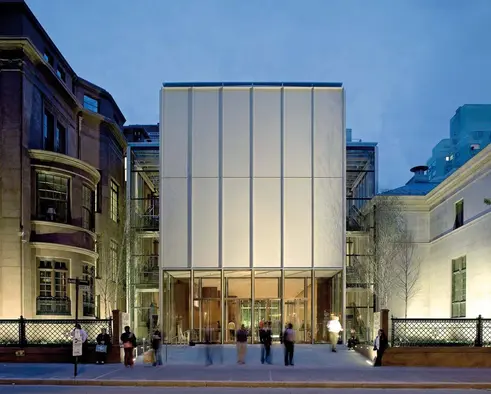 The Morgan Library entrance and annex courtesy of Renzo Piano Building Workshop/ The Morgan Library & Museum
The Morgan Library entrance and annex courtesy of Renzo Piano Building Workshop/ The Morgan Library & Museum
The Morgan Library and Museum, 225 Madison Avenue
Neighborhood: Murray Hill
Architect: Renzo Piano Building Workshop
The Morgan Library and Museum was originally designed to house J.P. Morgan’s private library and art collection, but today serves as a public museum and scholarly research center. When it was time to usher the Classical Revival building by McKim, Meade & White into the 21st century, the museum turned to Renzo Piano. A modernist entrance building isn’t much to look at from street level, but allows for greater organization and exhibition space.
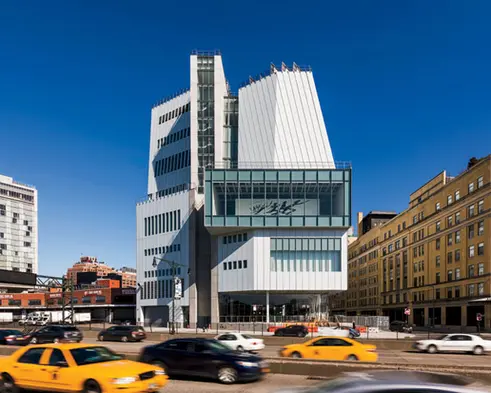 The Whitney Museum (Jeff Goldberg of Esto)
The Whitney Museum (Jeff Goldberg of Esto)
The Whitney Museum of American Art, 99 Gansevoort Street
Neighborhood: West Village
Architect: Renzo Piano Building Workshop
After years of trying to expand its landmark building on the Upper East Side, the Whitney Museum of American Art started anew in the Meatpacking District. Five years of construction later, an airy, expansive new structure opened near the southern entrance of the High Line. The design by Renzo Piano Building Workshop offers New York’s largest column-free art gallery space, two stories devoted to the museum’s permanent collection, and an eighth-floor cafe and outdoor terraces overlooking the Hudson River and historic Greenwich Village streets.
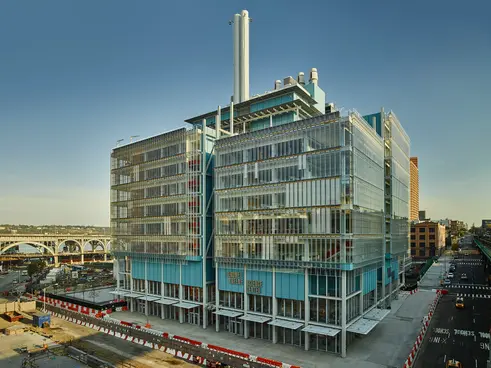 The Jerome L. Greene Science Center via Columbia University
The Jerome L. Greene Science Center via Columbia University
The Jerome L. Greene Science Center, Columbia University
Neighborhood: Harlem
Architect: Renzo Piano Building Workshop
Columbia University’s new Manhattanville campus is set to transform its section of Harlem, and Renzo Piano Building Workshop’s designs are set to make a statement. The boldest of these is the Jerome L. Green Science Center, which is the largest building Columbia has ever undertaken and the biggest academic science building in New York. The glass-enclosed, sustainably designed building hosts the Zuckerman Mind Brain Behavior Institute, innovative common spaces, an education lab, a community wellness center, and street-level retail and restaurants.
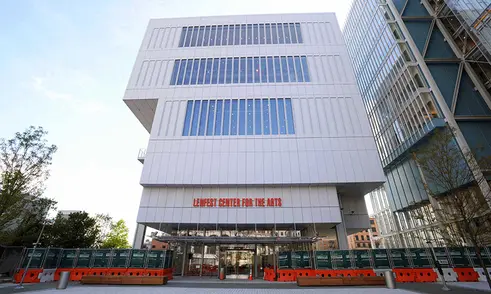 Lenfest Center for the Arts via Columbia University
Lenfest Center for the Arts via Columbia University
Lenfest Center for the Arts, Columbia University
Neighborhood: Harlem
Architect: Renzo Piano Building Workshop
Up the street from the Jerome L. Green Science Center, the Lenfest Center for the Arts hosts all sorts of exhibitions, screenings, and symposia, not to mention the Miriam & Ira D. Wallach Art Gallery. The architectural team behind the science center created an eight-story building with soaring ceilings, open and column-less spaces, and careful control of natural light.
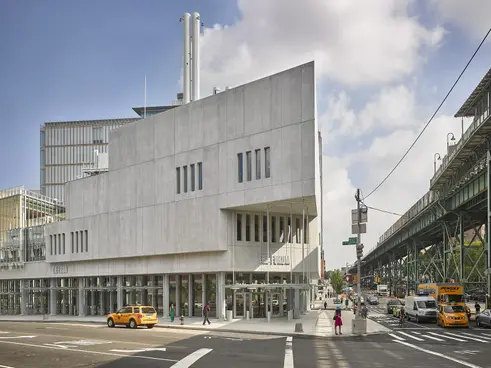 The Forum via Columbia University
The Forum via Columbia University
The Forum, Columbia University
Neighborhood: Harlem
Architect: Renzo Piano Building Workshop
The goal of Columbia’s Manhattanville campus was always to foster a stronger connection between the university and the local community, and the Forum, a 430-seat auditorium, epitomizes that goal by creating a shared meeting space that hosts scholars and thought leaders in all fields. While the auditorium itself needs opaqueness, the offices on top require daylight. The design by Renzo Piano Building Workshop masterfully incorporates both.
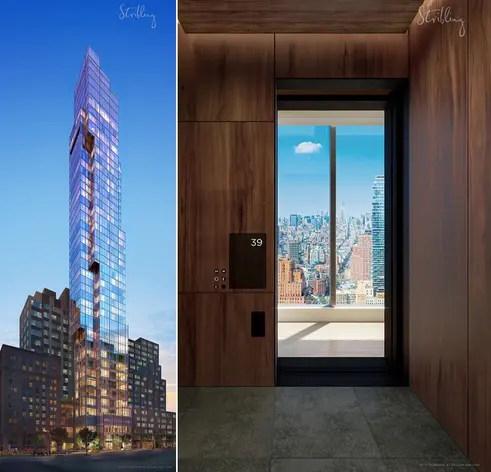 45 Park Place interior renderings via Williams New York
45 Park Place interior renderings via Williams New York
45 Park Place
Neighborhood: Tribeca
Architect: SOMA Architects; interiors by Pietro Lissoni
Architect and designer Pietro Lissoni, best known for his work on projects ranging from yachts to showrooms to products, took his talents to the interiors of a very delayed Tribeca tower. In an interview with Architectural Digest, he described a desire “to create a space that is elegant and contemporary, while evoking a sense of home.” He has certainly achieved that with high-end materials, nods to the neighborhood, and utmost attention to detail. Construction of the project has been stalled for several years and it is unknown when work will resume.
Would you like to tour any of these properties?
Just complete the info below.
Or call us at (212) 755-5544
Would you like to tour any of these properties?

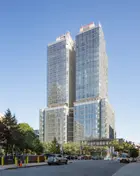
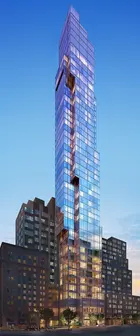
 6sqft delivers the latest on real estate, architecture, and design, straight from New York City.
6sqft delivers the latest on real estate, architecture, and design, straight from New York City.
